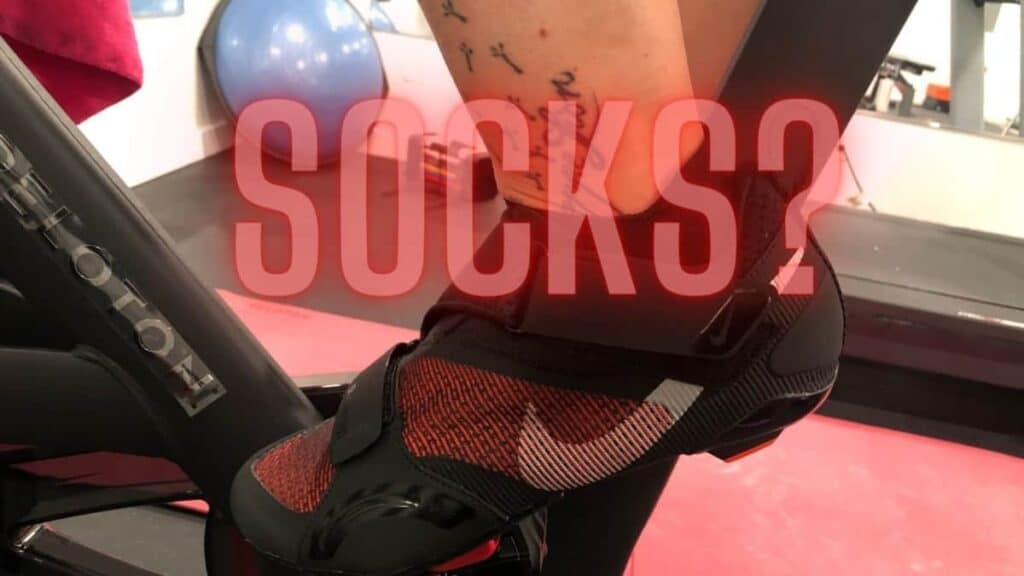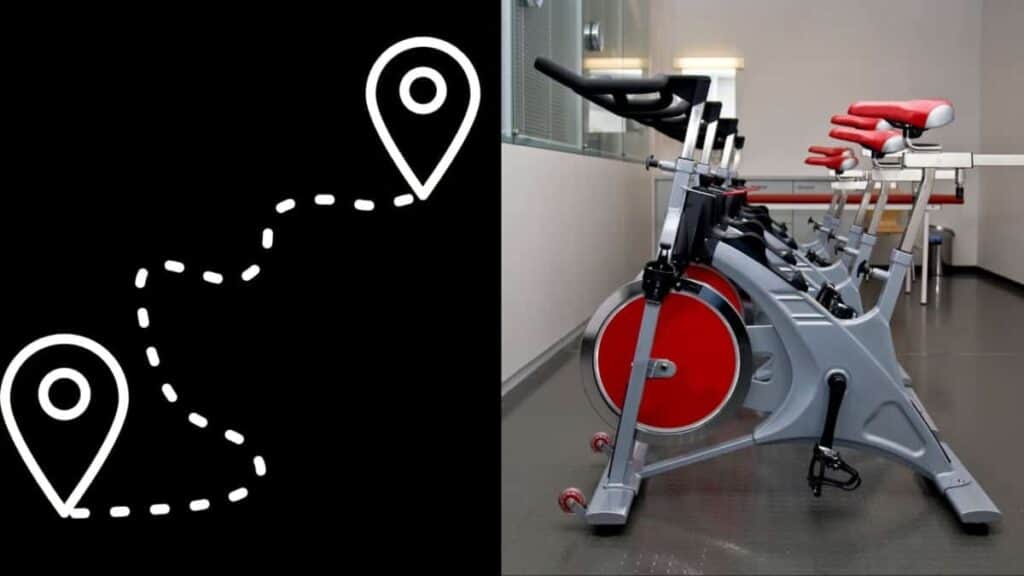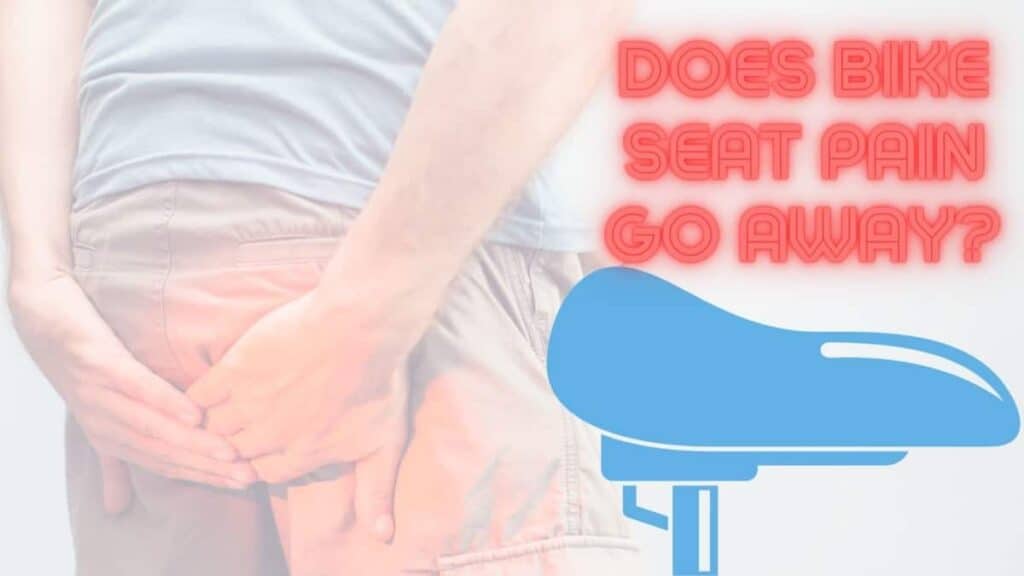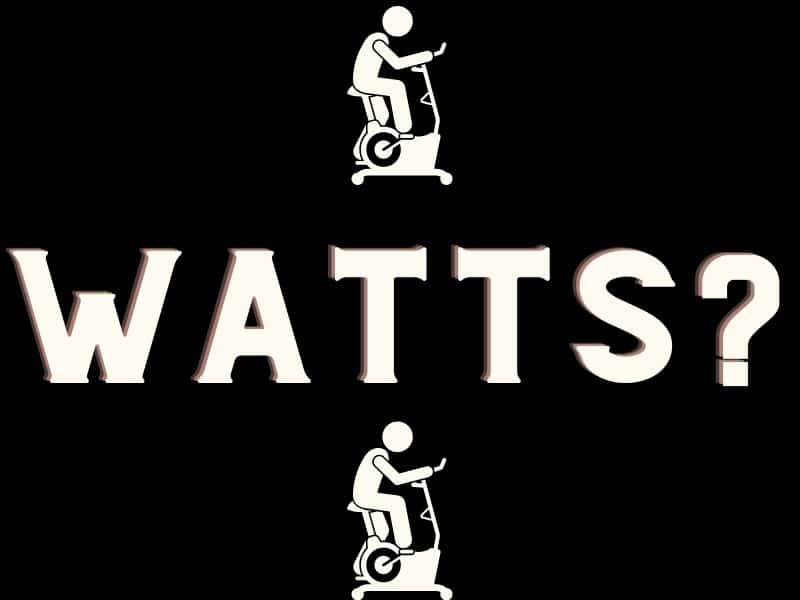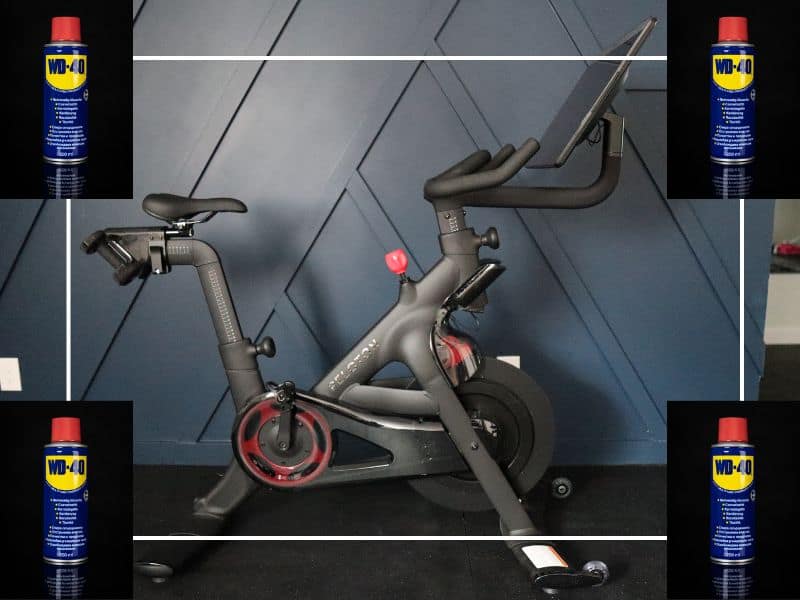Cycling shoes are so snug-fitting they’re almost like socks with a sole. Thus, triathletes don’t bother with them. Why lose 10-30 seconds of precious race time when the shoes practically fit like socks already? But what about the majority of us who stick to cycling without the swim, be it outdoors or spin class? Do we need socks? And if we do, does the length really matter?
As a general rule, cycling socks are best for your feet when cycling. Socks prevent chafing, keep feet cooler, and wick away sweat. Socks can also reduce odor and build-up from sweat and dead skin. Length of socks matters more for outdoor cycling than indoor spinning, such as Peloton.
You don’t have to wear official cycling socks with your bike shoes. Even in cheaper box stores, there are socks out there that will fulfill your needs. Maybe they won’t have the latest mesh panels or compression, but they’ll keep your feet happy during a workout, whether on the trail or during a Peloton class. However, you still need the key features required from socks worn with cycling shoes.
3 Essential Reasons Of why you Need to Wear Cycling Socks with Cycling Shoes
If you are new to cycling and trying to stuff your regular socks into your bike shoes, you’re probably finding it a miserable experience. Cycling socks are designed with key features to keep your feet happy and comfortable while wearing bike shoes. There are many excellent cycling socks out there. But you don’t have to buy them. Any old socks will do, so long as they meet the key requirements.
1 – Cycling Socks Are Thin And Tight
Cycling without socks is more comfortable than trying to spin in thick socks. In the cycling world, “thick” is still thin for most other sports. Many running socks are too thick to pair well with cycling shoes. Thus, cycling socks are not just ultra-thin but tight-fitting, so they don’t interfere with the shoe.
Cycling shoes are tight and stiff because they are trying to waste as little of your energy as possible, transferring as much of your force directly into the bike. Due to this unique fit, the socks can’t be baggy or thick, or they’ll cause pinching, bunching, and even sores.
Thus, while you don’t have to have other fancy features offered by bike socks, such as arch support and cushion, you can’t compromise on the thin and tight.
2 – Cycling Socks Allow Your Feet To Breathe
Cycling socks must be made out of a breathable fabric. Fancy options will often have ventilation panels, but that isn’t a must. You just need to ensure your feet can get plenty of circulation to reduce the heat.
If you don’t like synthetics, an excellent option is thin merino wool. However, you should stay away from cotton. While it is breathable, it doesn’t mean the third requirement.
3 – Cycling Socks Are Moisture-Wicking
To keep blisters from forming in your snug, form-fitting shoes, you need to minimize sweat accumulation. This is why cotton is a rotten choice for cycling socks. It may be breathable, but it is not moisture-wicking. So much so hikers have a motto, “Cotton kills.” While the stakes are far less drastic when riding a Peloton, blisters really rob the fun from workouts.
Do They Make Winter Cycle Socks?
Unfortunately, in the cycling world, just because the weather gets cooler doesn’t mean your socks get thicker. Sure, you can switch to your favorite thin merino wool cycling socks, but it isn’t going to make a dramatic difference. Thus, since your shoes will not get any wider, cyclists solve the problem by wearing cycling overshoes or booties. It’s like a sock crossed with a rain jacket to wear over your shoes and socks.
Here is an example of cycling covers we recommend.

Does The Length Of Cycle Socks Matter?
The length of cycling socks is one of enormous debate. However, if that debate applies to you depends on the type of cycling. If you are only riding a Peloton, just wear whatever length you feel most comfortable in. You want to wear thigh-highs? Fine. You like ankle socks? Also, fine.
However, if you are cycling outdoors, either on the trail or the road, you will want your socks to go higher than the ankle. This gives you a bit of protection from any kicked-up debris. Also, some cyclists find longer lengths offer a bit more support to the lower calf and tendons.
Some people enjoy wearing aero socks, as these shave a bit of time off your ride. They are not allowed in professional cycling, however. People with calf issues sometimes want full support up the leg, even if not technically aero socks. Again, this is usually fine, provided you are not in the UCI.
Do Compression Sleeves Help Cyclists?
Cyclists often enjoy some compression to their socks, especially in the arches. Also, some injuries seem to be helped by some compression, either from a sock or sleeve. But thus far, the studies done on cyclists wearing standard compression sleeves do not appear to be getting any added performance benefit. However, the aero socks are another matter.
Some cyclists feel their recovery is faster if they wear a longer compression sock or sleeve while riding. But not everyone has the same experience. Most find the benefit comes from wearing compression sleeves or socks after the ride. Thus, if it is working for you, great. But if you don’t feel like you are getting any benefit, you’re not alone.
What If I Don’t Like Wearing Socks With My Cycling Shoes?
If your feet prefer commando, they are your feet and your shoes. However, you will have to take more care in regularly washing your shoes, usually by hand. The attention to hygiene isn’t just to combat the smell. Sweat is slightly acidic. Thus, over time, the continued direct contact with your feet will break down your shoes faster.
Plus, there are all those bacteria and potential fungi that will have fun in your shoes unless you wash them as you do with socks. That bacteria can eventually play havoc with your feet, causing a vicious circle. So again, it isn’t that you can’t wear your bike shoes without socks. But for both the sake of your feet and your shoes, it will be a lot more work to keep your shoe-hygiene top-notch.
In short, it’s a lot easier just to wash a pair of socks.
A Few Of Our Favorite Cycling Socks
- Swiftwick Aspire Seven cycling socks: These are a tall crew sock, great for the individual that wants a bit of compression. They are thin and breathable and have nearly perfect reviews!

- Thirty 48 cycling socks: These socks are moisture wicking and have an elastic arch support they are also low profile, so they will look great during your spin class! These are a fan favorite and are priced very fairly!
![Thirty48 Low Cut Cycling Socks for Men and Women | Unisex Breathable Sport Socks (Large - Women 9-12 // Men 8-11, [3 Pairs] Black/Gray) Thirty48 Low Cut Cycling Socks for Men and Women | Unisex Breathable Sport Socks (Large - Women 9-12 // Men 8-11, [3 Pairs] Black/Gray)](https://m.media-amazon.com/images/I/417+84VVsLL._SL160_.jpg)
- Danish Endurance Cycling Socks: These are well loved socks among many and for good reason. The Danish Endurance socks are lightweight and breathable. They have padded anti-blister zones to keep your feet feeling at there best during the longest of rides! If you are looking for the ultimate cycling experience then these socks are your very best option!

Conclusion
Socks are recommended when wearing cycling shoes. While they are not a must, your feet and shoes will benefit you by wearing socks. However, while there are many excellent cycling socks out there, you don’t have to buy official bike socks. Wear what you like as long as your socks meet the three main criteria of being thin, breathable, and moisture-wicking.

